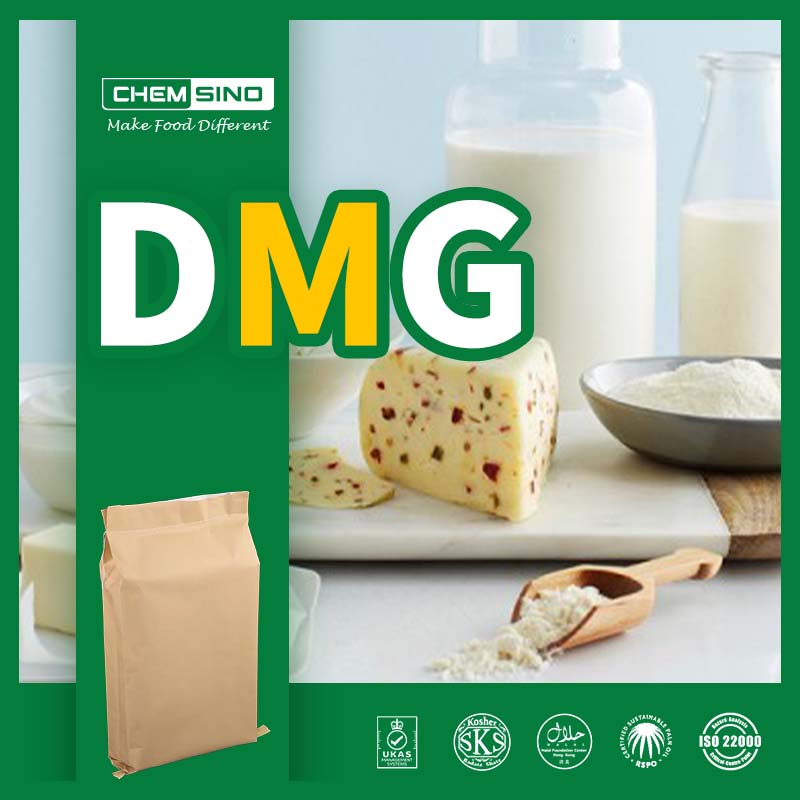Future Advancements in Emulsifier In Food Technology
Everything about the Function of an Emulsifier in Food and Its Significance in Modern Cuisine
Emulsifiers are crucial in contemporary cuisine, promoting the blend of immiscible fluids like oil and water. Their capability to stabilize combinations improves the appearance and flavor of various foodstuff. From salad dressings to baked goods, emulsifiers play a substantial function in both business and home cooking. Yet, the scientific research behind their function and the future innovations in their usage remain less discovered. Emulsifier In Food. What a lot more could be unearthed about these crucial cooking representatives?
Understanding Emulsification: The Scientific Research Behind the Process
Emulsification may appear like an easy culinary technique, it involves intricate scientific principles that are important for creating stable blends of immiscible fluids, such as oil and water. At the heart of this procedure lies the concept of surface area stress, which protects against both liquids from mixing naturally. Emulsifiers, materials that reduce surface tension, play an essential function in assisting in the combination of these liquids. They have both hydrophilic (water-attracting) and hydrophobic (water-repelling) residential properties, allowing them to anchor themselves at the interface in between oil and water.
When an emulsifier is presented and the combination is agitated, it creates a safety obstacle around distributed beads of one fluid within the various other, supporting the blend. This action not just boosts appearance and mouthfeel in food but additionally contributes to their aesthetic charm. Emulsifier In Food. Comprehending the science behind emulsification is fundamental in contemporary food, permitting cooks to create a selection of sauces, dressings, and emulsified meals
Typical Kinds Of Emulsifiers Made Use Of in Food
Emulsifiers are crucial active ingredients in the food sector, playing a critical function in stabilizing combinations of oil and water. Various kinds of emulsifiers are generally utilized, each with unique buildings fit for various applications. Lecithin, acquired from soybeans or egg yolks, is just one of the most preferred all-natural emulsifiers, commonly found in dressings and delicious chocolates. Mono- and diglycerides, which are originated from glycerol and fats, are extensively utilized in baked products and margarine to enhance appearance and prolong rack life. An additional common emulsifier is polysorbate 80, favored for its ability to boost the consistency of ice creams and sauces. In addition, xanthan gum tissue and guar periodontal act as thickening agents that additionally contribute to emulsification in gluten-free products. These emulsifiers are indispensable to producing a secure, tasty item in modern-day food formulations, making certain a positive sensory experience for consumers.
The Function of Emulsifiers in Various Food Products
A range of foodstuff rely on emulsifiers to achieve desired appearances and stability. These compounds facilitate the mixing of immiscible fluids, such as oil and water, which is essential in many processed foods. For example, in salad dressings, emulsifiers help preserve a constant combination, preventing separation and improving service life. In baked products, they contribute to an uniform crumb framework and wetness retention, boosting total top quality.
Emulsifiers also play a significant function in milk products, such as ice cream and yogurt, where they support fat blobs, making certain a smooth mouthfeel. In addition, in condiments and sauces, they improve viscosity and enhance spreadability. This capability is essential in the production of delicious chocolates, margarine, and mayo, where a cohesive product is needed. Generally, the usage of emulsifiers in numerous food items is indispensable to modern-day food production, improving security and consistency like this across a variety of items.
Just How Emulsifiers Enhance Appearance and Taste

When integrated into food items, emulsifiers substantially improve both texture and taste, producing a more enjoyable consuming experience. These compounds facilitate the mixing of components that generally do not mix well, such as oil and water, causing a smoother, creamier consistency. This not just enhances mouthfeel but additionally enables tastes to distribute evenly throughout the item, amplifying the total taste.

Emulsifiers in Home Cooking: Tips and Techniques
How can home cooks efficiently utilize emulsifiers to improve their meals? Emulsifiers play a necessary duty in attaining preferable structures and flavors in homemade recipes. For instance, using egg yolks in mayonnaise or hollandaise sauce allows for a secure solution, incorporating oil and water properly. Home chefs can likewise try out mustard, which serves as an emulsifier in vinaigrettes, ensuring a smooth uniformity.
In cooking, integrating lecithin, found in egg yolks or soy, can boost dough security and wetness retention. Additionally, making use of commercial emulsifiers like xanthan periodontal or guar gum can aid visit the website enlarge sauces and dressings while keeping a creamy mouthfeel.
When creating ice creams or whipped toppings, emulsifiers can protect against ice crystal formation, resulting in a smoother appearance. By grasping these techniques, home chefs can considerably raise their cooking developments, providing regular and satisfying meals that showcase the power of emulsification.
The Future of Emulsifiers in Culinary Advancement
As the culinary globe continues to progress, the role of emulsifiers is positioned to become progressively innovative and varied. Advancements in food scientific research are resulting in the growth of new emulsifying representatives acquired from natural resources, which accommodate health-conscious consumers and improve the sensory qualities of meals. Innovations such as plant-based emulsifiers are acquiring grip, allowing chefs to produce vegan and allergen-free alternatives without endangering structure or taste.
In addition, the use of emulsifiers in molecular gastronomy is broadening, making it possible for chefs to explore one-of-a-kind textures and presentations that mesmerize restaurants. As sustainability comes to be a priority, the future may see a shift towards environment-friendly emulsifiers that lower environmental impact.
Inevitably, emulsifiers will proceed to play an important function in cooking technology, linking the gap between custom and modernity, and enabling cooks to press the borders of creativity in their kitchens.
Frequently Asked Questions

Are Emulsifiers Safe for Individuals With Allergic reactions?
Emulsifiers can be risk-free for individuals with allergies, depending upon their particular sensitivities. However, particular emulsifiers, acquired from allergenic sources like soy or eggs, may cause responses, necessitating careful active ingredient examination and assessment with healthcare experts.
How Do Emulsifiers Impact Food Shelf Life?
Emulsifiers boost food service life by stabilizing combinations, stopping separation, and minimizing microbial growth. This security helps preserve appearance and flavor with time, enabling items to continue to be safe and attractive for usage longer than without emulsifiers.
Can Emulsifiers Be Derived From All-natural Resources?
Yes, emulsifiers can be try here originated from all-natural sources such as plants, eggs, and milk items (Emulsifier In Food). These natural emulsifiers help maintain mixes, improving structure and uniformity in various food applications while being liked for health-conscious customers
What Are the Environmental Effects of Emulsifier Manufacturing?
The environmental impacts of emulsifier production consist of source depletion, habitat damage, and air pollution from synthetic processes. Natural emulsifier sourcing can alleviate some results, yet in general, industrial methods still present substantial ecological challenges to ecological communities worldwide.

Are There Vegan Emulsifiers Available on the market?
Yes, there are several vegan emulsifiers available in the marketplace, such as lecithin originated from soy or sunflower, guar gum tissue, and xanthan gum tissue. These choices accommodate plant-based diet plans without compromising emulsifying residential or commercial properties.
Emulsifiers are important ingredients in the food sector, playing a vital function in stabilizing combinations of oil and water. A selection of food products count on emulsifiers to accomplish desired textures and security. When incorporated right into food products, emulsifiers greatly boost both structure and taste, producing a more delightful eating experience. Additionally, emulsifiers can maintain air pockets in whipped products like mousses and creams, leading to a light and ventilated texture. Emulsifiers boost food shelf life by maintaining mixes, protecting against splitting up, and reducing microbial development.